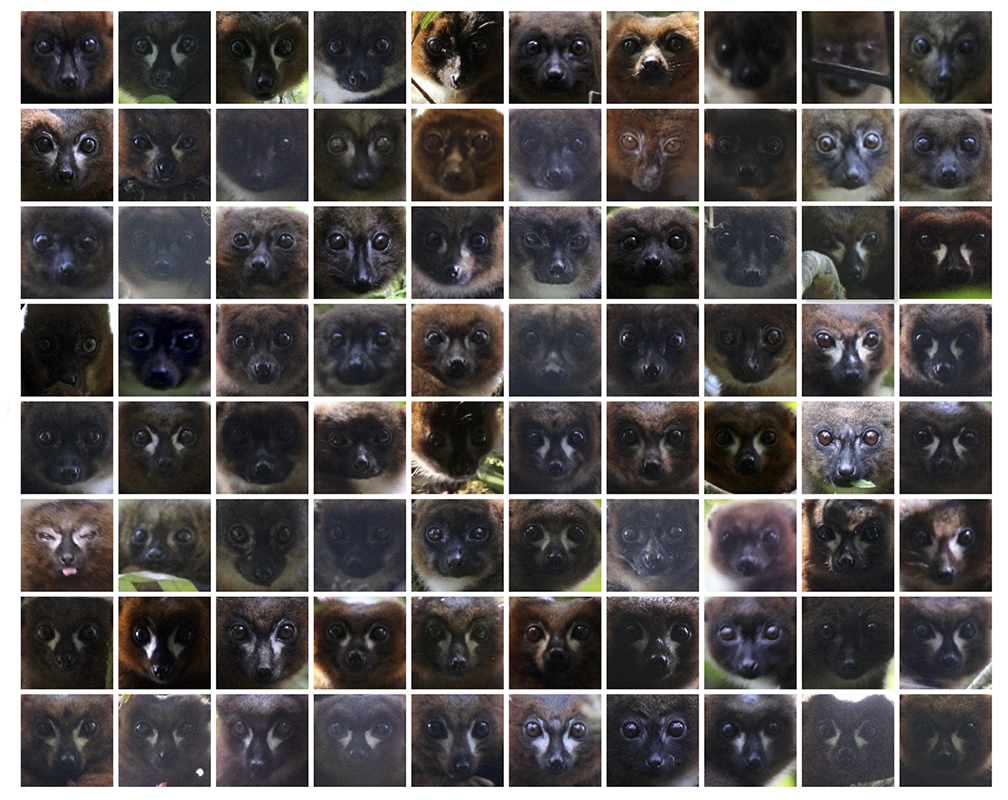Lemur Faces Are Unique, Facial Recognition Reveals

When observing wildlife behavior in a natural setting, researchers typically need to keep their distance, making it challenging to identify individual animals and track their movements and activity over time.
One new method recently developed for observing red-bellied lemurs takes a high-tech approach to long-distance identification, using modified facial-recognition software.
Biologists collaborated with computer engineers to adapt software designed to recognize human faces, creating a new program dubbed LemurFaceID, which they described in a new study. The software detects unique features in lemur faces so that researchers can pinpoint individuals even in the absence of features such as scars or injuries, and without causing the lemurs undue stress that comes with capture. [Wild Madagascar: Photos Reveal Island's Amazing Lemurs]
Previously, the most accurate means of identifying individual lemurs involved trapping and tagging the animals. But LemurFaceID only requires a frontal-view photo of a lemur's face — a lemur "mug shot" — which is then uploaded to a database and analyzed by algorithms tailored to work on lemur faces, evaluating variability in facial hair patterns and in other unique facial features.
Highly accurate facial tracking
Using LemurFaceID, scientists assembled a database from 462 photographs of 80 known red-bellied lemurs living in Madagascar's Ranomafana National Park. In 100 trials, the software correctly identified individual lemurs from images with nearly 98 percent accuracy, the researchers reported.
"We demonstrate that the LemurFaceID system identifies individual lemurs with a level of accuracy that suggests facial-recognition technology is a potential useful tool for long-term research on wild lemur populations," the study authors wrote online Feb. 17 in the journal BioMed Central Zoology.

LemurFaceID offers a means for scientists to quickly determine if newly sighted lemurs are unique, and could help scientists track long-term individuals over the long term. The software could even track lemurs that have been poached and sold illegally, study co-author Rachel Jacobs, a biological anthropologist with the Center for the Advanced Study of Paleobiology at The George Washington University, said in a statement.
Sign up for the Live Science daily newsletter now
Get the world’s most fascinating discoveries delivered straight to your inbox.
Facial-recognition software such as LemurFaceID could also be applied to other species that have similar variations in the patterns of their facial hair and skin — for example, red pandas, sloths, bears and raccoons — and could reduce the risk of injury that animals face from traditional capture and collar methods, the researchers wrote in their journal article.
"We see lots of different potential applications for this," study co-author Stacey Tecot, an assistant professor at the University of Arizona School of Anthropology, said in the statement. "This is just the first step for us in taking this in many directions."
Original article on Live Science.

Mindy Weisberger is an editor at Scholastic and a former Live Science channel editor and senior writer. She has reported on general science, covering climate change, paleontology, biology and space. Mindy studied film at Columbia University; prior to Live Science she produced, wrote and directed media for the American Museum of Natural History in New York City. Her videos about dinosaurs, astrophysics, biodiversity and evolution appear in museums and science centers worldwide, earning awards such as the CINE Golden Eagle and the Communicator Award of Excellence. Her writing has also appeared in Scientific American, The Washington Post and How It Works Magazine. Her book "Rise of the Zombie Bugs: The Surprising Science of Parasitic Mind Control" will be published in spring 2025 by Johns Hopkins University Press.


